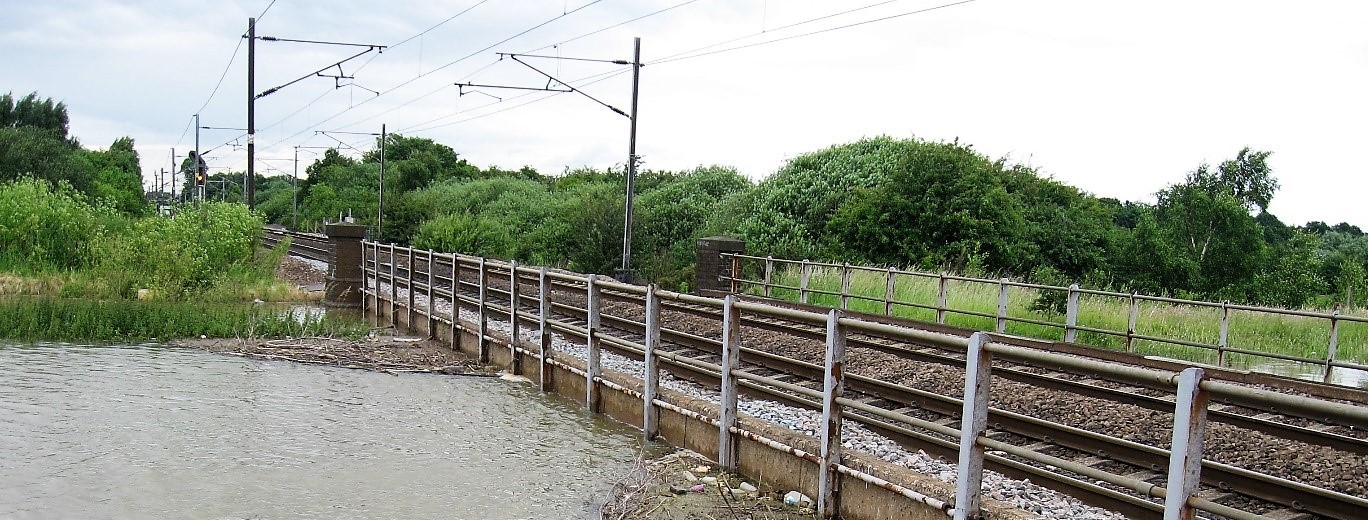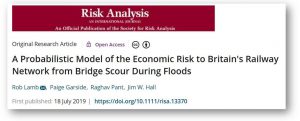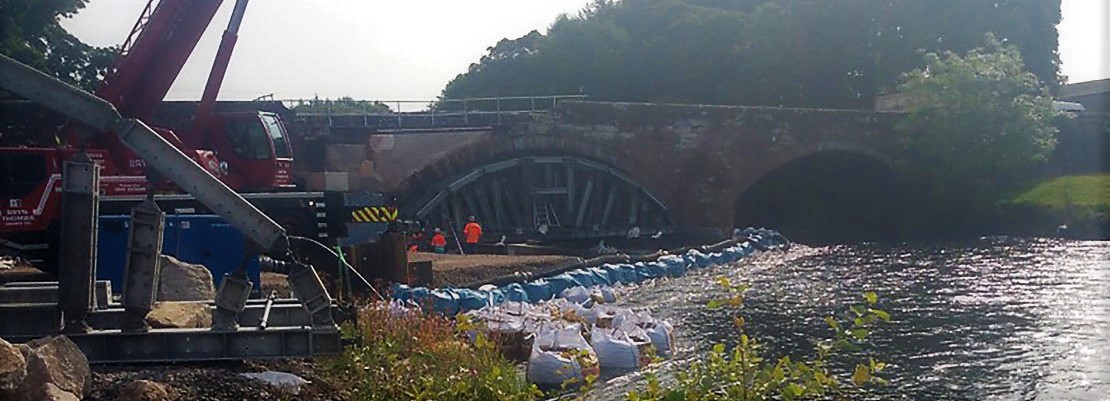Infrastructure network risk analysis: scour at railway bridges
New paper reports a probabilistic analysis of the risk to the British railway network from scour at bridges
This summer has highlighted how the resilience of our infrastructure can be tested at any time by different types of extreme or unusual events. People in Whaley Bridge had to leave homes and businesses because of the partial collapse of the dam at Toddbrook reservoir after extreme rainfall, while others have been flooded elsewhere in the country. Transport networks and other services have been disrupted by flooding and by power cuts, causing problems for many people.
Some of these events also highlight how important it can be to have a sound understanding of risk. For example, flood risk maps and models can help by informing emergency planners about the places likely to suffer flooding if a dam were to breach.
But for large and complex infrastructure networks, it can be very difficult to assess the probabilities and consequences of extreme events. We have been working with Dr Raghav Pant and Professor Jim Hall at the at the Environmental Change Institute, University of Oxford to understand more about risks to infrastructure networks. Our focus has been on the risk of erosion around bridges during flooding, which is known as scour. Scour can cause substantial damage to bridges, leading to transport disruption and safety risks.
Last week, we published a new paper on the risk to the British railway network from scour caused by flood events.
This research considers the railway network as whole, including the potential for flood events that might cause more than one bridge to be damaged by scour. Although events of this type are rare, they have occurred in the past and could do so again. Flooding and bridge failures are not completely predictable, and so we took a probabilistic approach to account for uncertainties about the resilience of bridges during flood events, and the potential for scenarios that are more extreme than the floods we happen to have experienced in the past.
Key features of the research
We built a statistical model to account for uncertainty in the occurrence of bridge failures caused by flood events, based on historical records of bridge failures.
We accounted for the frequency and severity of floods using a probabilistic model of river flows that captures the spatial patterns and correlations in extreme events across Britain. This model was developed during previous research with statisticians at Lancaster University.
We looked at the consequences of bridge failure in terms of risk of disruption to passenger journeys, which can be translated into an economic estimate of the risk. This analysis was developed by the University of Oxford as part of the ITRC-Mistral research project.
What did we find?
- We have estimated that the risk of bridge scour equates to an average of 8.2 million passenger journeys being “lost” annually.
- We found that 76% of this annual risk is attributable to events in which more than one bridge fails due to scour. This follows from our probabilistic model for extreme river flows, which includes the chances of extreme river flows occurring concurrently in different places.
How do we interpret the findings?
Our estimate of the risk of disruption from scour includes flood event scenarios that are more extreme than anything seen in the historical record. These scenarios are very extreme, but are statistically plausible, and would result in severe network disruption, especially when they cause either one or two bridges to fail within the network.
We also looked at scenarios in which three, four, or more than four bridges could fail during a flood. Although these scenarios would cause extreme disruption and therefore carry some risk, they become progressively less important to the annual risk than the simpler scenarios (individual or pairs of bridges) because the probability of multiple-asset failures is very small.
From an economic perspective, the risk of disruption to passenger journeys can be valued at between £6m and £60m annually. It is important to note that this figure is a partial view of the true risk, which also includes safety risks, impacts on rail freight, operational costs (e.g. related to speed restrictions and delays) and repair costs. It is also important to recognise that our model is based on historical records of bridge failures, and historical river flow data. This means that it is informed by real events, but does not account for future changes in climate, and only implicitly reflects actions that infrastructure owners have taken to mitigate scour risk in the past. In context, the estimated annual average disruption to passenger journeys is a small proportion (around 0.5%) of the total number of journeys each year. This can be interpreted as a residual risk that would be bigger if there were no measures taken to combat scour, and that may be reduced further by on-going scour mitigation actions.
Looking beyond the rail network, the new paper describes a generic methodology that could be applied to other types of hazard, and other complex networks of assets, to understand risk as a combination of probability and consequences.




